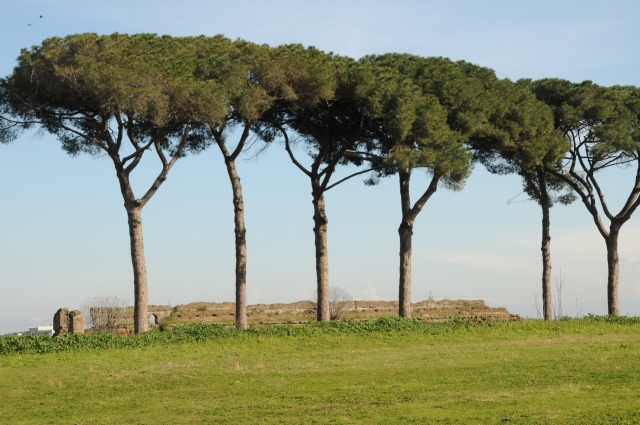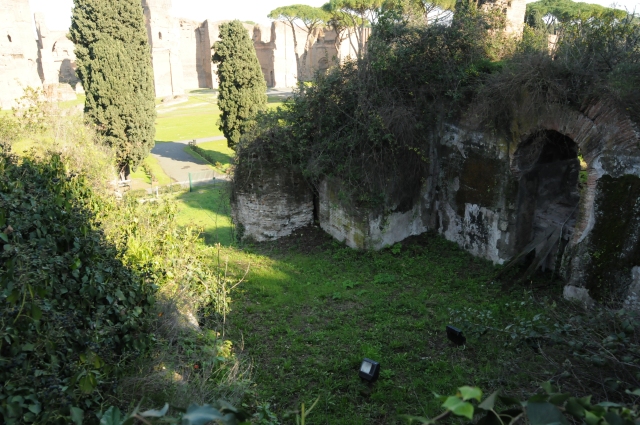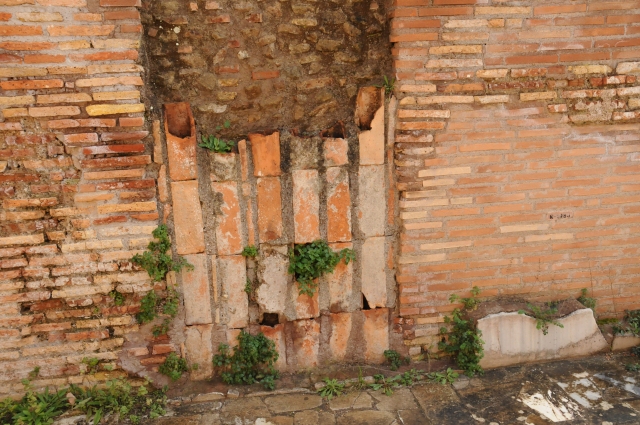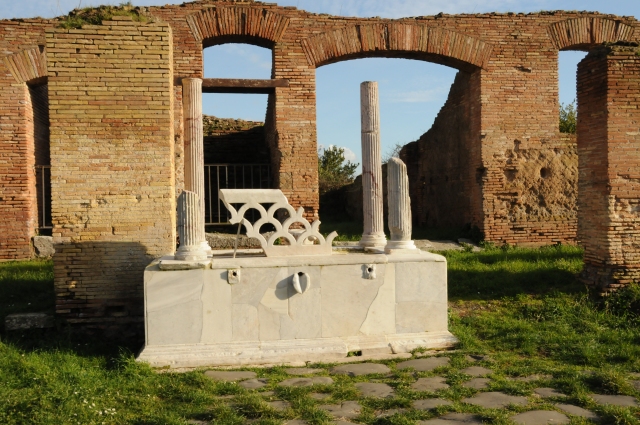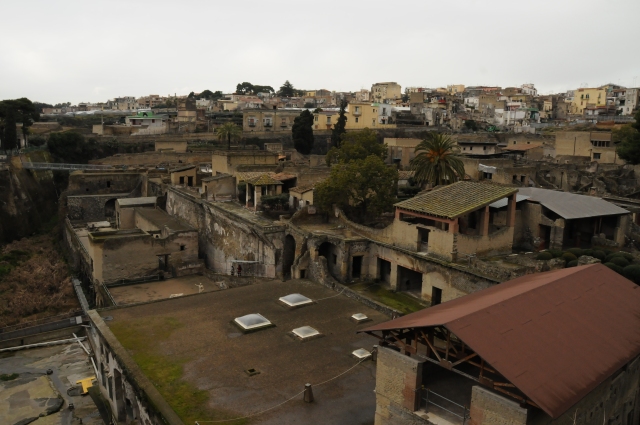The Aqueducts of Rome
Gilbert Bagnani – “The sport of aqueduct trailing is a delightful one, which entails, however, a very considerable amount of physical energy,” The Roman Campagna and its Treasures, Methuen & Company Limited, p. 203.
From the founding of Rome for almost four and a half centures the little city had no outside water supply other than the Tiber River, wells, and springs. Rome built a walled city between 378 and 352 B.C., with the population increasing significantly by 312 B.C. The first aqueduct built (312 B.C.) was the Aqua Appia that was constructed underground. For more than five centuries Rome built eleven aqueducts that brought water into the city. The aqueduct names are: Appia – Anio Vetus – Marcia – Tepula – Julia – Virgo – Alsietina – Claudia – Anio Novus – Trajana – Alexandrina.
Raffaele Fabretti in 1680 described the aqueducts as the fruits of Rome’s foresight and greatness (Romanae providentiae magnitudinis que primitiae)
Photo shows the Circus Maxima and Palatine Hill above. Palatine Hill is the most ancient part of the city upon a hill overlooking the Forum on one side and the Circus Maxima on the other.
Model of ancient Rome at the Museum of the Ancient Civilization of Rome, Rome. Shows Nero’s Branch aqueduct that supplied water to Palatine Hill to the left, and also showing the Colesium.
The Aqua Nero branch (along Via di S. Gregorio between the Arch of Constantine and the Circus Maximus) leading to Palatine Hill and Caelian. Branch Aqua Nero began at the Porta Maggiore, tapping the Aqua Claudia. The brick facing is mostly modern.
Aqueduct Claudia near the farmhouse of Romavecchia
Aqua Marcia (in background) seen through an arch of the Aqua Claudia
Aqueduct Claudia with Aqua Anio Novus near the farmhouse of Roma Vecchia
Aqua Marcia
Aqua Claudia along side railroad tracks to Naples.
Aqua Marcia,
Aqua Marcia constructed in 144 B.C. with the Aqua Tepula and Aqua Julia channels on top constructed in 33 B.C. by Agrippa. Note the cement covered channel on top of the arcade. This is the still functioning Aqua Felice built in 1585.
Remains of cistern that tapped water from the Aqua Marcia at the Villa Vignacce (constructed by Hadrian in A.D. 123). A water shaft with a vertical holding basin was built between the aqueduct and cistern that served as a settling tank. The cistern was a two story tank divided into three chambers on the bottom and four on the top story.
Branch aqueduct of the Aqua Claudia, located along Via Appia Antica.
Aqua Marcia (c0nstructed 144 B.C.) with remains of the Aqua Tepula on top at Romavecchia.
Porta Maggoire
Model of Porta Maggoire at Museum of the Roman Civilization
At the Porta Maggoire with Aqua Marcia on top and Anio Novus on the bottom.
The Aqua Marcia is shown with the Aqua Tepula (in the middle) and Aqua Julia (on top) at the Porta Maggiore. A pier of the Aqua Marcia is preserved in the Aurelian Wall.
Near the beginning of the Aqua Nero arcade near Porta Maggiore
Aqua Nero arcade
Aqua Nero arcade
Aqua Nero arcade
Secondary castellum near main train station in Rome
Baths of Caracalla (Thermae Antoninianae)
Baths of Caracalla (Thermae Antoninianae), supplied by a branch of the Aqua Marcia called Aqua Antoniniana starting near Porta Furba.
Aqua Antoniniana that supplied water to the large cisterns of the Baths of Caracalla. The cisterns were located on the south side of the baths along Via Baccelli. The arcade of the Aqua Antoniniana shown above is on the opposite side of the cisterns. A roadside park is shown with the arcade being part of a wall of Villa Pepoli. Water was stored in the (32 chambers each two stories high) of the cisterns.
Aqua Antoniniana
Plan of Baths of Caracalla (Thermae Antoninianae)
Rekonstruierter Grundriss der Caracalla-Thermen. Quelle: Wilhelm Lübke, Max Semrau: Grundriß der Kunstgeschichte. Paul Neff Verlag, Esslingen, 14. Auflage 1908.
- A-Calidarium
- B-Nymphaeum
- C-Great Hall
- D-Frigidarium (Swimming Pool)
- E-Courts
- G-Palaestra
- H-Lecture Halls
- I-Vestibules
- L-Dressing Rooms
- N-Steam Baths
- Q-Lounges
- S-Gymnasia
- T-Study Rooms
- V-Nymphaea
Bildbeschreibung: Innenraum der Caracalla-Thermen (Tepidarium), aus: F.A. Genzmer: Bade- und Schwimm-Anstalten, Stuttgart 1899
Fountain
Collesium
Exit of Cloaca Maxima to the Tiber River
Ostia Antica – near Rome
Ostia was developed in 386 B.C., functioning as part of the imperial port system of Rome, located some 20 miles from Rome at the mouth of the Tiber River. Portus, built in the 1st century A.D. and located to the north of Ostia, became Rome’s principal maritime harbor as Ostia was more limited in its ability to handle a large number of ships.
Public lavatory (latrine) at Tridlinon area
Fountain on right. Water from fountain was reused in the latrine shown on the rigth in the photo.
Latrine
Latrine
Heating system for bath showing terracotta conduit through which hot air passed
Heating system for bath showing terracotta conduit through which hot air passed.
Cistern
Small fountain
Cistern
Fountain in the Decumanus
Fountain
????????
Fountain
Herculaneum
Lead pipe at Herculaneum (photo by Susi Mays)
Tivoli, Italy: Hadrian’s Villa (Villa Adriano)
The Canopus ornamental pool and channel.
Baths in background.
Baths







